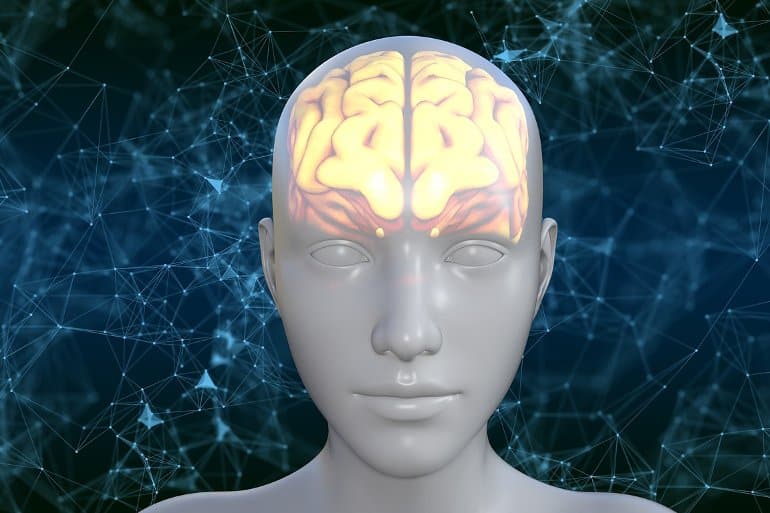Summary: Glutamate binds to the subunits of its receptor only in specific patterns. The findings upend previous belief that each subunit binds glutamate independently and points to a new level of complexity in neurotransmission and drug response.
Source: Columbia University
One of the most important molecules in the brain doesn’t work quite the way scientists thought it did, according to new work by researchers at Columbia University Vagelos College of Physicians and Surgeons and Carnegie Mellon University.
The results, published April 20 in Nature, may aid the development of a new generation of more effective neurological and psychiatric therapies with fewer side effects.
The new research takes a close look at glutamate, the most prevalent neurotransmitter in the brain. Glutamate binds to receptors on brain cells, which opens a channel into the cell, allowing ions to pass through to propagate an electrical signal.
“The way the brain works is through communication between neurons, and these are the main receptors which allow this communication,” says Alexander Sobolevsky, Ph.D., associate professor of biochemistry and molecular biophysics at Columbia and senior author on the paper.
Each receptor can bind up to four molecules of glutamate and produce four different levels of conductivity. Previous studies had linked binding to conductivity in a simple stepwise fashion, in which binding each additional glutamate molecule increased the conductivity another step.
While that explanation made sense, nobody had looked closely enough to confirm it. In the new work, the investigators combined a technique called cryo-electron microscopy with sophisticated data analysis to reveal the first detailed pictures of glutamate binding to its receptors.

“We actually carried out experiments in the conditions where we see all these intermediates, one glutamate and then two glutamates, three glutamates, and then it binds all four,” says Sobolevsky.
These images reveal that glutamate binds to the subunits of its receptor only in specific patterns. That overturns the prevailing view that each subunit binds glutamate independently and points toward new levels of complexity in neuronal signaling and drug responses.
Instead of straightforward stepwise transitions, Sobolevsky and his colleagues found that a glutamate molecule must bind to one of two specific receptor subunits before any glutamates can bind to the other two subunits.
In addition, the conductivity levels of the receptor didn’t correlate directly to the number of glutamates bound to it; a receptor could have two or more glutamates attached but still only reach the first level of conductivity.
The results open an entirely new line of investigation, and the team is now probing how different accessory molecules on neurons affect the interaction. Learning more about the glutamate receptors’ specific activation states may aid the development of better drugs for conditions that involve glutamate receptors, such as depression, dementia, Parkinson’s disease, epilepsy, and stroke.
About this neuroscience research news
Author: Press Office
Source: Columbia University
Contact: Press Office – Columbia University
Image: The image is in the public domain
Original Research: Closed access.
“Opening of glutamate receptor channel to subconductance levels” by Maria V. Yelshanskaya et al. Nature
Abstract
Opening of glutamate receptor channel to subconductance levels
Ionotropic glutamate receptors (iGluRs) are tetrameric ligand-gated ion channels that open their pores in response to binding of the agonist glutamate. An ionic current through a single iGluR channel shows up to four discrete conductance levels (O1–O4). Higher conductance levels have been associated with an increased number of agonist molecules bound to four individual ligand-binding domains (LBDs).
Here we determine structures of a synaptic complex of AMPA-subtype iGluR and the auxiliary subunit γ2 in non-desensitizing conditions with various occupancy of the LBDs by glutamate.
We show that glutamate binds to LBDs of subunits B and D only after it is already bound to at least the same number of LBDs that belong to subunits A and C.
Our structures combined with single-channel recordings, molecular dynamics simulations and machine-learning analysis suggest that channel opening requires agonist binding to at least two LBDs.
Conversely, agonist binding to all four LBDs does not guarantee maximal channel conductance and favours subconductance states O1 and O2, with O3 and O4 being rare and not captured structurally.
The lack of subunit independence and low efficiency coupling of glutamate binding to channel opening underlie the gating of synaptic complexes to submaximal conductance levels, which provide a potential for upregulation of synaptic activity.







